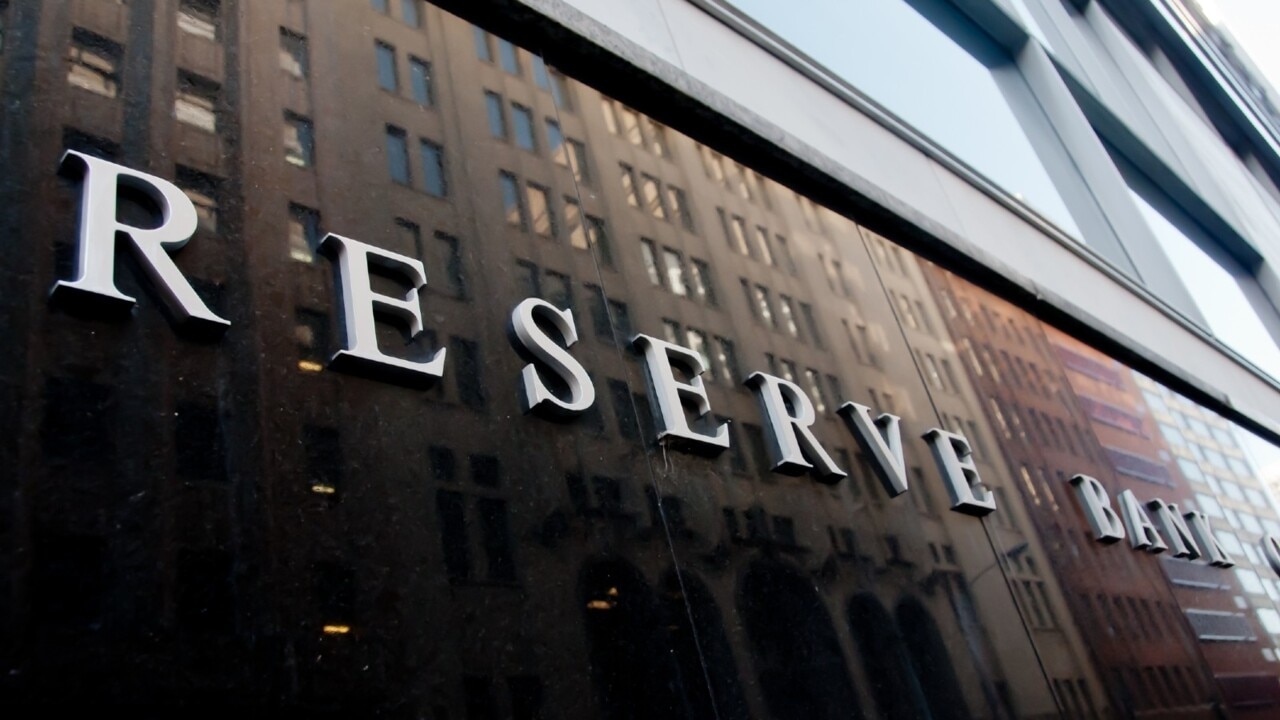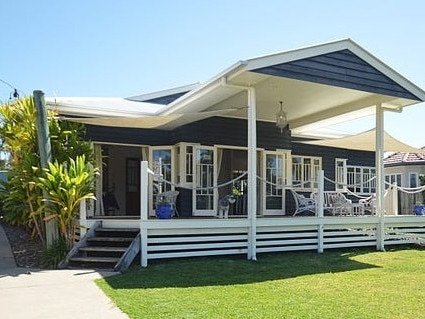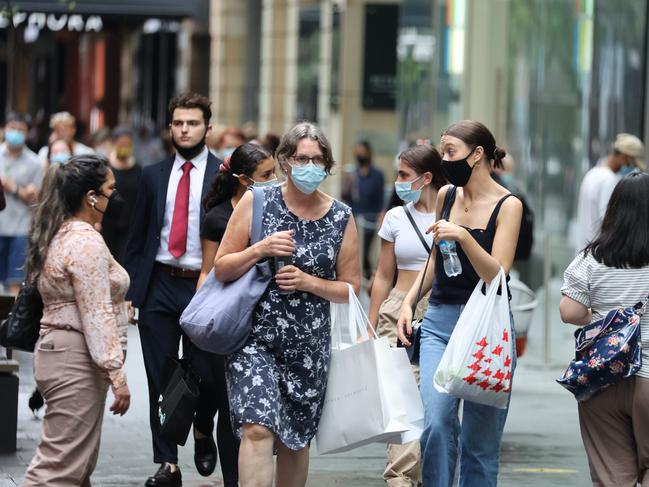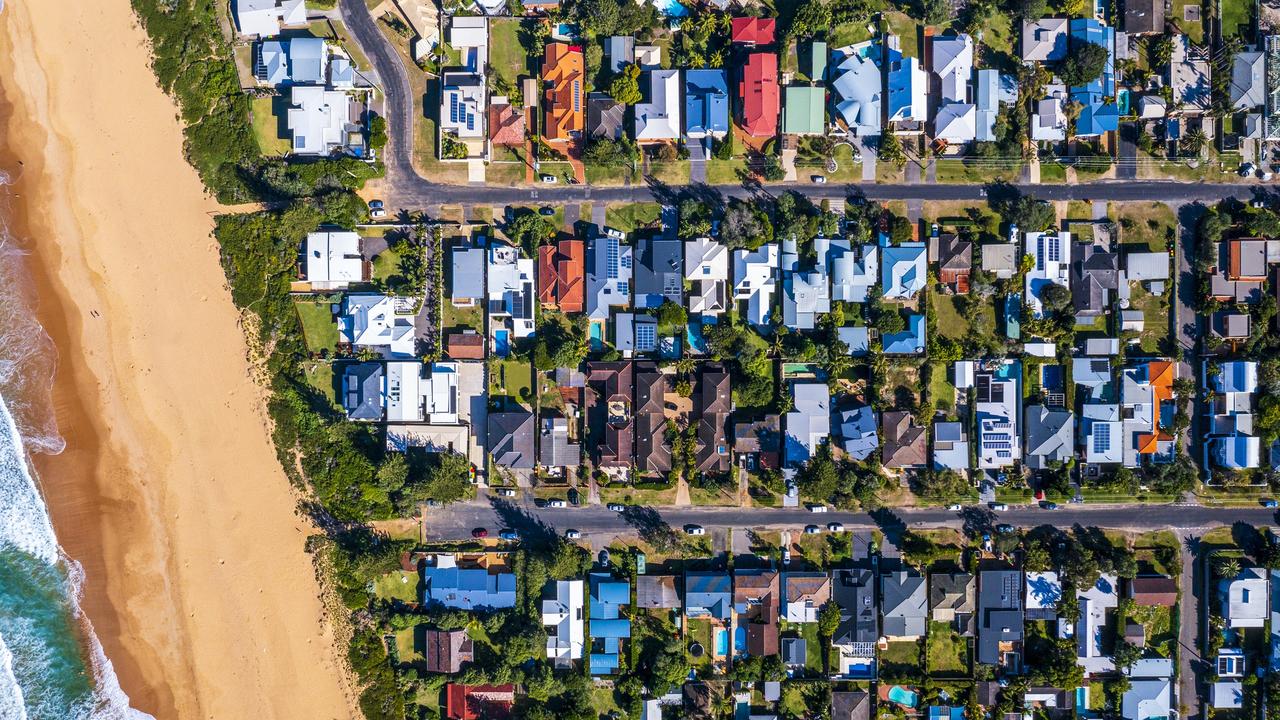Westpac predicts six interest rate rises by March 2024
Australian borrowers could see their monthly repayments rise by about $500 over the next two years with the RBA tipped to begin jacking up interest rates.

Interest Rates
Don't miss out on the headlines from Interest Rates. Followed categories will be added to My News.
Australian borrowers could see their monthly repayments rise by about $500 over the next two years, with the central bank tipped to begin jacking up interest rates as early as August.
The Reserve Bank has held the official cash rate steady at its record low of 0.1 per cent since November 2020. Australia has not seen a cash rate rise since November 2010 – and RBA Governor Philip Lowe has repeatedly said he does not expect any increase until at least late 2023.
But Westpac is now predicting six interest rate rises between now and early 2024 – in August 2022, October 2022, March 2023, June 2023, December 2023 and March 2024 – to bring the cash rate from 0.1 per cent to 1.75 per cent.
Westpac chief economist Bill Evans outlined his revised interest rate forecasts in a note on Thursday, saying the bank previously expected the first hike in February 2023, but “developments since then have now prompted us to bring forward that tightening date to the meeting on August 2, 2022”.
“We now expect one hike of 15 basis points in August to be followed by a further hike of 25 basis points in October,” Mr Evans said.
If Westpac’s predictions come true, an average 2.98 per cent variable rate borrower with a $500,000 mortgage would see their repayments rise by $103 per month by the end of October.
For a $750,000 mortgage repayments would increase by $154, and for a $1 million mortgage the increase would be $204.
By March 2024, the repayments on the $500,000 mortgage would be $427 per month higher than today, $641 for the $750,000 mortgage, and $854 for the $1 million mortgage.

The average loan size for owner-occupied dwellings in Australia is just under $596,000, according to the Australian Bureau of Statistics’ most recent data from November 2021.
NSW borrowers had by far the highest loans at an average of $769,000, followed by Victoria on $619,000, the ACT on $586,000 and Queensland on $514,000.
CoreLogic data for 2021 showed the median price for houses and apartments rising by 22.1 per cent to $709,803, the fastest calendar-year increase since 1989.
South Australia had the lowest average loan size on $422,000, followed by NT on $433,000, Western Australia on $440,000 and Tasmania on $446,000.
“While the exact timing of the next cash rate hike is still not certain, borrowers need to know that rates are on the rise – it’s just a matter of when,” RateCity research director Sally Tindall said in a statement.
“Recent APRA data shows the average borrower is currently 45 months ahead on their repayments, however, that doesn’t mean every borrower will be able to take these rate hikes in their stride. One way you can prepare for future hikes is to get ahead on your repayments now while rates are still low. The lower your loan size when rates do rise, the less pain you’ll feel.”
Ms Tindall said now was a good time for variable borrowers to check their current rate and potentially switch to a more competitive lender, or ask their bank for a discount.
“That way, when the cash rate does rise, they’ll at least be coming off a low base,” she said.
“RBA data shows the average existing variable rate customer is on a rate of 2.98 per cent, while the average new customer is on a variable rate of 2.59 per cent – that’s a 0.39 per cent difference worth haggling for. If you do manage to move on to a lower rate, consider putting any savings back into your loan, which will also help minimise the impact of future rate rises.”

In his report, Mr Evans said Westpac was revising its cash rate predictions as it had “quite different forecasts” for inflation, wages growth and unemployment than the RBA.
“We understand that the Governor has firmly indicated that he does not expect to be raising rates until very late 2023 or 2024 and that this expectation is entirely consistent with the Bank’s current economic forecasts,” he said.
The RBA forecasts underlying inflation will reach 2.25 per cent by the end of 2022 and 2.5 per cent by the end of 2023, while wages growth will reach 2.5 per cent in 2022 and 3 per cent in 2023.
“Our forecast revisions reflect a much faster lift in inflation and wages growth than envisaged last June,” Mr Evans said.
“We now think the RBA will need to venture into mildly contractionary policy settings to address any inflation/wages risks.”
Westpac expects underlying inflation will reach 2.4 per cent in 2021, 2.6 per cent in March 2022 and 2.9 per cent in June 2022.
Unemployment is also much lower than the RBA had predicted, adding further pressure to raise interest rates.
The unemployment rate fell to 4.2 per cent in December, its lowest point in more than 13 years.
Westpac is tipping unemployment to dip as low as 3.8 per cent by the end of this year – which would be the lowest rate since 1974.
Despite Omicron expected to have a major impact on consumer spending in January, shaving 0.5 per cent off Australia’s growth, Westpac expects a “solid bounce back” later in the year.
“Westpac Economics is now forecasting growth for 2021 and 2022 of 3.2 per cent and 5.5 per cent, respectively,” Mr Evans said.
“That is revised from the pre-Omicron profile of 2.8 per cent and 6.4 per cent, with a net reduction of 0.5 per cent. We do not see that correction as having a significant impact on jobs growth or wages/inflation.”
Originally published as Westpac predicts six interest rate rises by March 2024





